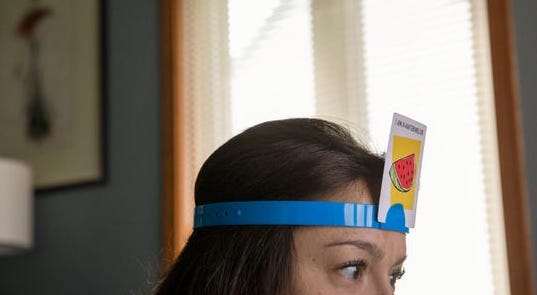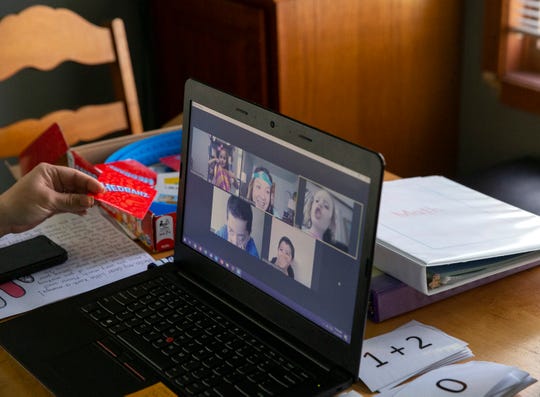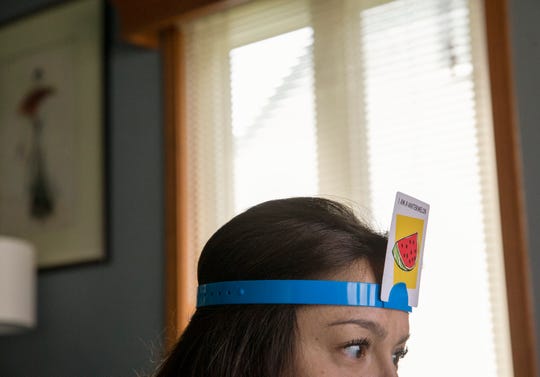
Borsuk: Young Children Struggle with Distance Learning. This Teacher has Solutions.
Alan J. Borsuk, Special to the Journal Sentinel
*This article originally appeared on The Milwaukee Journal Sentinel May 15, 2020
“My main job as a K4 teacher is making kids fall in love with learning.”
And Emily Suarez Del Real is doing her best to do her job.
These days, it’s not easy, and the circumstances are not ideal. Suarez Del Real’s work took a big turn when conventional schooling stopped in mid-March due to the coronavirus pandemic. She has been working with her students since then by video, online conversations, phone and so on.
But Suarez Del Real and many others like her are convinced kids can make progress in education in this time of distance learning, even young kids.
“Four- and five-year-olds during this time can absolutely be engaged,” she says. Can there be success in meeting their learning goals? “Absolutely.”
It’s a lot easier to envision what can be done with students from, say, fourth grade on up. They can work on computers on their own, they can take part in discussions online, they can do assignments and projects. Older kids generally can take some responsibility for doing (or not doing) schoolwork.But what do you do with kindergartners or pre-school kids?
I fear for what the broad answer is nationwide. From what I’ve read, large numbers of early childhood centers have closed or made major cutbacks. For kindergartners, the work they’ve been given has often been on the level of busywork. Parents have become their main teachers and, to be frank, many are not that good as teachers.
Where things are going better for young kids, high-energy, dedicated teachers and school leaders are keys.

Emily Suarez Del Real talks to her students through a Zoom meeting on Friday. In the beginning of the pandemic, she tried to gather all of her 26 students in one meeting. However, since her students are all age 4 or 5, it’s hard for her to organize all of the students. Thus, she divided her class into groups of six people. (Photo: Zhihan Huang / Milwaukee Journal Sentinel)
That brings us, by Zoom call, to Suarez Del Real. She had been a paraprofessional for several years at Rocketship Southside Community Prep, a charter school at 3003 W. Cleveland Ave. She moved up to teaching K4 last fall, and made it a top priority to build relationships with her students and their parents, including home visits.
These days, you can’t do the same face to face and you can’t do home visits. But you can do good things and infuse them with the energy a teacher such as Suarez Del Real has.I spoke with educators at Rocketship and at Next Door, a large early childhood education organization on the north side, and their approaches to having good impact were similar:
Providing a lot of short video lessons, made by teachers. Connecting frequently with parents and involving them. Making a lot of electronic or telephone contact with kids, one on one or in small groups, sometimes just to talk or let kids interact with friends. Giving a lot of attention to what parents need, from food and diapers to just talking to someone who cares.
Also, making sure all students have adequate equipment and service to do online learning.
Where there has been no or very limited contact with a child (and there are many of them at most schools), making energetic efforts to find out how they’re doing and what can be done to engage them.
Crucially, providing real educational content, coupled with monitoring of how each student is doing.
Rocketship is strongly into specific ways of presenting subjects and it uses loads of data on how each student and class is doing. That has not changed.
Brittany Kinser, who leads the two Rocketship schools in Milwaukee, said that at least 80% of the 700 students are expected to meet this year’s learning goals, set before the great disruption. Suarez Del Real thinks the percentage for her K4 kids will be higher.
Kinser said, “If we can make sure they are learning, that is the most powerful thing we can do. . . . We cannot give another obstacle to our students.”
For Suarez Del Real, her work includes a lot of personalized positive feedback, such as printed high fives that she sends by mail. Many of her students post their work online for her to see and she tries to respond promptly so kids know their efforts are being noticed.
Martha Ruiz said her daughter, Maya, one of Suarez Del Real’s students, has taken surprisingly well to at-home learning. Maya likes watching her teacher’s videos, working on word lists and math lessons, and talking directly with Suarez Del Real at least once a week.

Emily Suarez Del Real plays a HedBanz game with her students through a Zoom meeting to teach her students about animals and fruits on Friday. (Photo: Zhihan Huang / Milwaukee Journal Sentinel)
Maya is not spending as much time on schoolwork as she would in normal times, but is she learning? Yes, her mother says. “I stay in constant communication with Ms. Suarez and make sure she (Maya) has met her Rocketship goals for the week.”
Magali Roman, whose son, Diego, is in Suarez Del Real’s class, said, “The best thing is that he is learning.”
Felicia Saffold, director of education at Next Door, said that when the program’s leaders were scrambling in mid-March to switch to distance learning, there was an impulse to offer what came quickest, like packets of worksheets.
“We said, no, no, no, we have to get back to our standards,” Saffold said. Starting with 5-year-old students, Next Door began building better offerings, and that has spread to offerings for younger kids.
Saffold said children are given a theme or question of the week, a recommended schedule of daily activities, and videos from teachers, plus personal communication with teachers. “It’s not random, it’s all centered around a skill,” Saffold said.Saffold said teachers are being creative in building partnerships with parents and in connecting lessons to home life — for example, using rectangular and round laundry baskets to teach about shapes.
Success at any time, but especially now, takes more than giving kids good computers and lessons. Kinser said, “We have to show them love and support.”
Almost no one thinks what is going on now, even in the best examples, is better than being in school. But when regular school isn’t an option, there are still ways to connect, to teach, and, as Suarez Del Real puts it, to offer kids ways to fall in love with learning.
Alan J. Borsuk is senior fellow in law and public policy at Marquette Law School. Reach him at alan.borsuk@marquette.edu.
Published on May 18, 2020
Read more stories about: Distance Learning, Education Reform, Teacher Experience.


